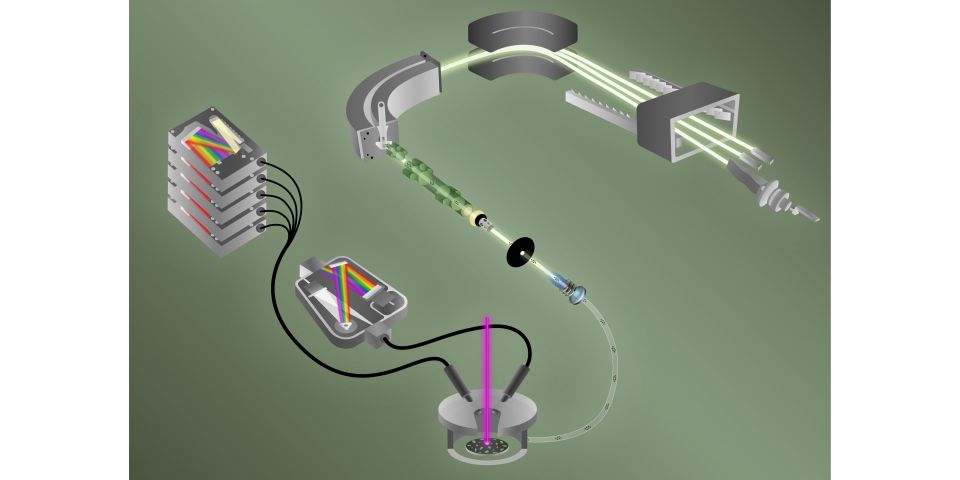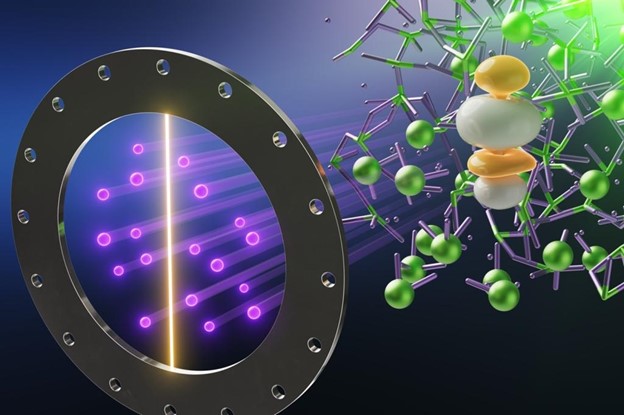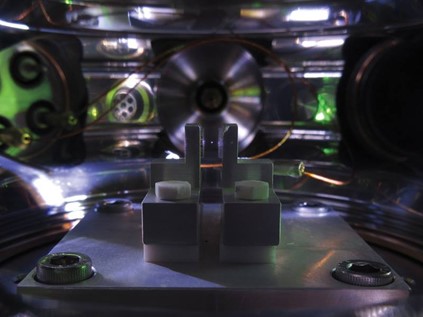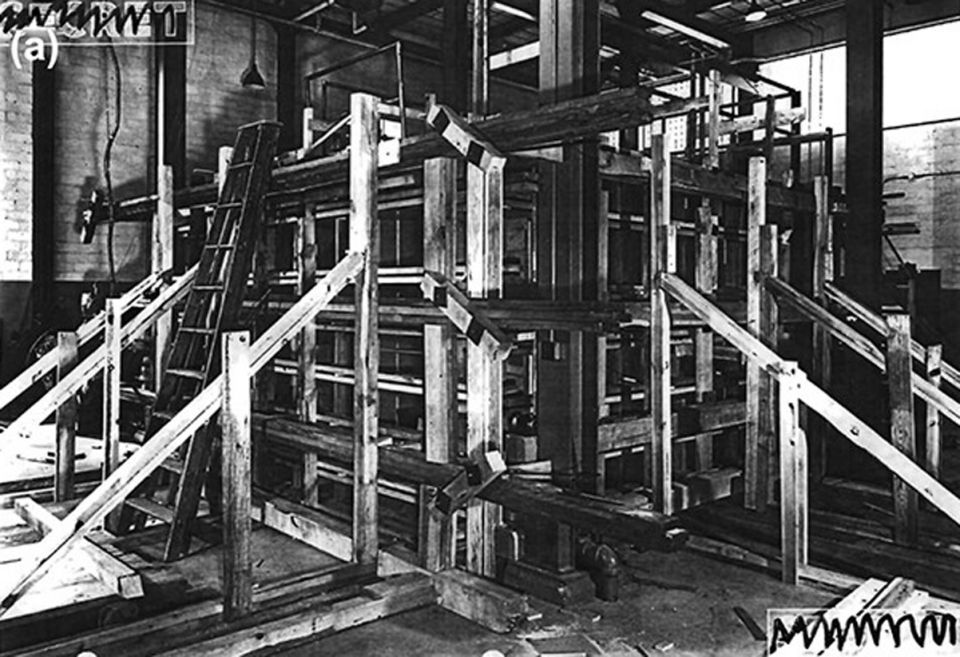Berkeley Lab’s titanium beam targets one goal: Making the heaviest element yet
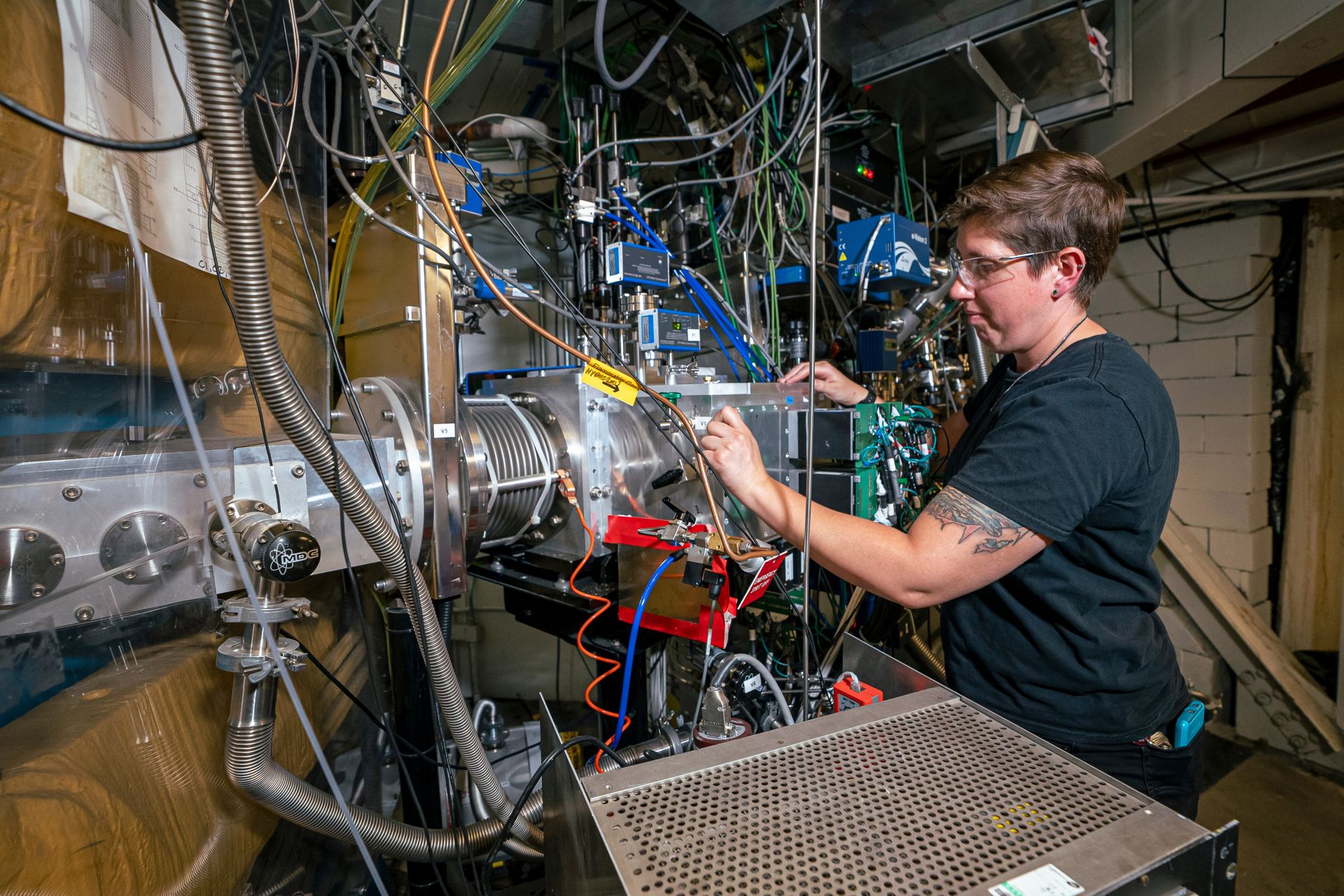
A plutonium target bombarded with a beam of titanium-50 in Lawrence Berkeley National Laboratory’s 88-Inch Cyclotron for 22 days has yielded two atoms of the superheavy element 116, in a proof of concept that gives Berkeley Lab researchers a path to pursue the heaviest element yet—element 120. The result was announced July 23 at the Nuclear Structure 2024 conference; a paper has been submitted to the journal Physical Review Letters and published on arXiv.
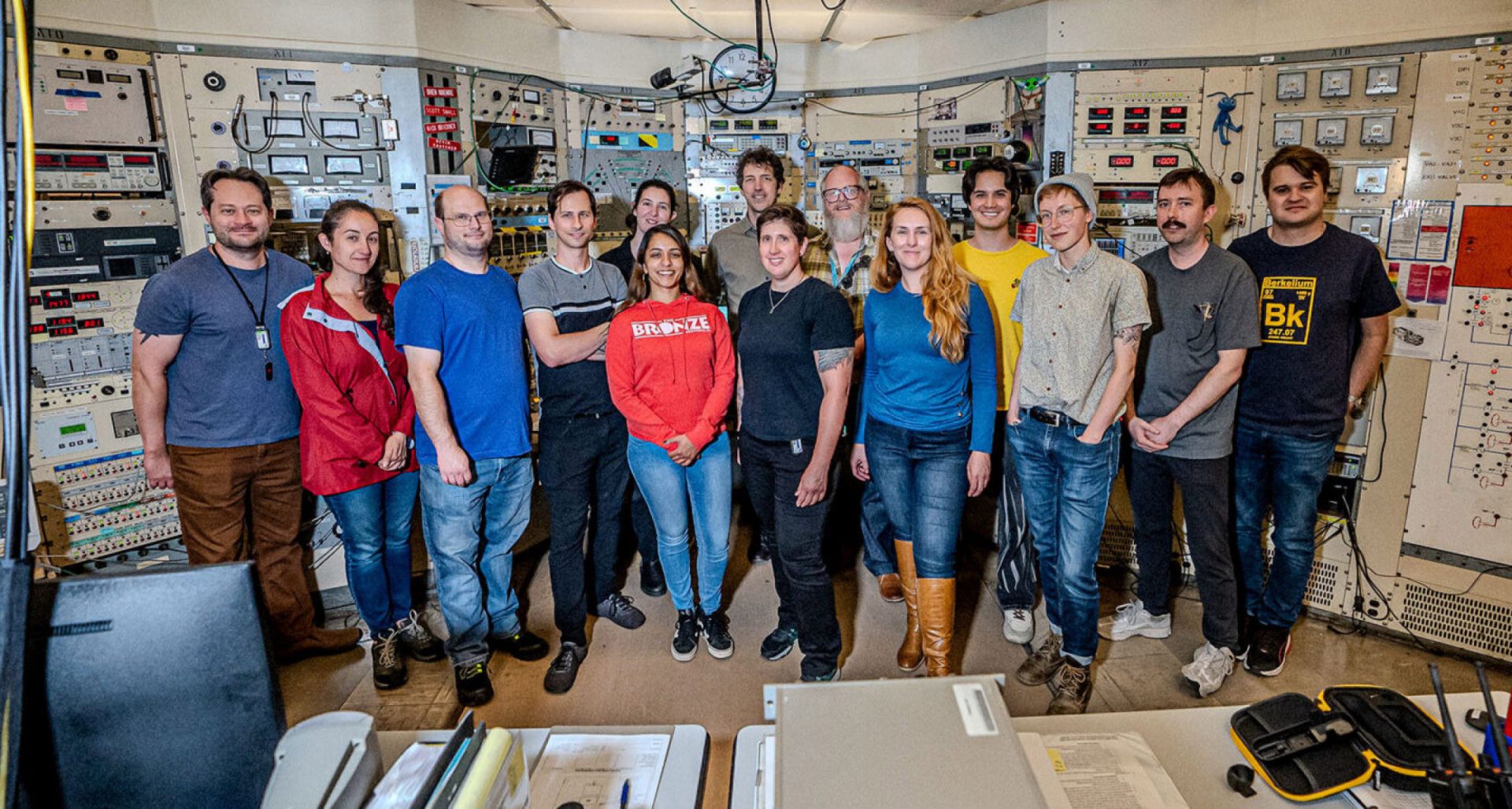
Experts who worked to create element 116 using a titanium beam gather in the control room for the 88-Inch Cyclotron. From left to right: Brien Ninemire (Operations Supervisor), Janilee Benitez (ECR Ion Source Operations), Patrick Coleman (Cyclotron Operator-in-Training), Erich Leistenschneider (Staff Scientist, Heavy Element Group), Marilena Lykiardopoulou (Postdoc, Heavy Element Group), Nishi Intwala (Cyclotron Operator), Damon Todd (Accelerator Physicist), Jacklyn Gates (Staff Scientist, Heavy Element Group), Rod Clark (Senior Staff Scientist, Nuclear Structure Group), Jenn Pore (Research Scientist, Heavy Element Group), Devin Thatcher (Cyclotron Operator), Emma Rice (Graduate Student, Nuclear Structure Group), Rodney Orford (Senior Scientific Engineering Associate, Heavy Element Group), and Corrigan Appleton (Postdoc, Nuclear Structure Group). (Photo: Marilyn Sargent/Berkeley Lab)
“This reaction had never been demonstrated before, and it was essential to prove it was possible before embarking on our attempt to make 120,” said Jacklyn Gates, the nuclear scientist at Berkeley Lab who led the effort.
Russian scientists first created element 116 (livermorium) in 2000 using a beam of calcium-48 and a target made of curium. But Berkeley Lab took a more challenging route, using a titanium-50 beam—the same beam that would be needed to produce element 120. The plan to make superheavy elements using Berkeley Lab’s unique facilities was included in the Nuclear Science Advisory Committee’s 2023 Long-Range Plan for Nuclear Science, and now it’s been proven possible.
Element 120 will be harder: Scientists at Berkeley Lab are credited in the discovery of 16 of the 118 known elements, but the last, seaborgium (element 106) was created 50 years ago, in 1974. Now, the lab’s Heavy Element Group wants to be the first to make element 120, which would sit on the eighth row of the periodic table. It approaches the “island of stability,” a theorized group of superheavy elements with unique properties that give researchers more time for study.
The heaviest practical target that could yield element 120 is californium-249, with 98 protons. That makes titanium, with 22 protons, the only candidate beam for an attempt on element 120.

Image caption.
Titanium proof: Researchers at the 88-Inch Cyclotron needed to prove that they could make a beam of the isotope titanium-50 that would be sufficiently intense to fuse with a plutonium-244 target. Until now, elements 114 to 118 had only ever been made with a calcium-48 beam (with 20 protons), which has a special or “magic” configuration of neutrons and protons that helps it fuse with the target nuclei to produce superheavy elements, according to Berkeley Lab.
The researchers have successfully generated a beam of titanium by heating and vaporizing a sample of titanium-50 inside an ion source called VENUS. Once the vaporized titanium atoms become charged, they can be maneuvered by magnets and accelerated in the 88-Inch Cyclotron. About 6 trillion titanium ions hit the rotating target every second.
“We knew these high-current titanium beams would be tricky because titanium is reactive with many gases, and that affects ion source and beam stability,” said Damon Todd, an accelerator physicist at Berkeley Lab and part of the ion source team. “Our new inductive oven can hold a fixed temperature for days, keeping titanium output constant and aiming it right at VENUS’s plasma to avoid stability issues. We are extremely pleased with our beam production.”
This could take a while . . . Before attempting to make element 120, researchers at the 88-Inch Cyclotron will prepare the machine for a californium-249 target while partners at Oak Ridge National Laboratory craft a target using about 45 milligrams of californium. According to Berkeley lab, researchers could potentially begin the attempt to create element 120 in 2025, and once the experiment is started, and if it is successful, it could take several years to see a few atoms of element 120.
“We needed for nature to be kind, and nature was kind,” said Reiner Kruecken, director of Berkeley Lab’s Nuclear Science Division, referring to the successful production of element 116. “We think it will take about 10 times longer to make 120 than 116. It’s not easy, but it seems feasible now.”
The collaboration for this work includes researchers from Berkeley Lab, Lund University, Argonne National Laboratory, Lawrence Livermore National Laboratory, San José State University, University of Strasbourg, University of Liverpool, Oregon State University, Texas A&M University, UC–Berkeley, Oak Ridge National Laboratory, University of Manchester, ETH Zürich, and the Paul Scherrer Institute.


